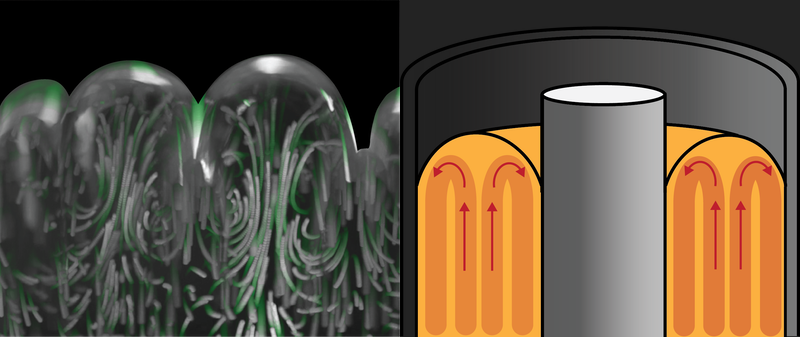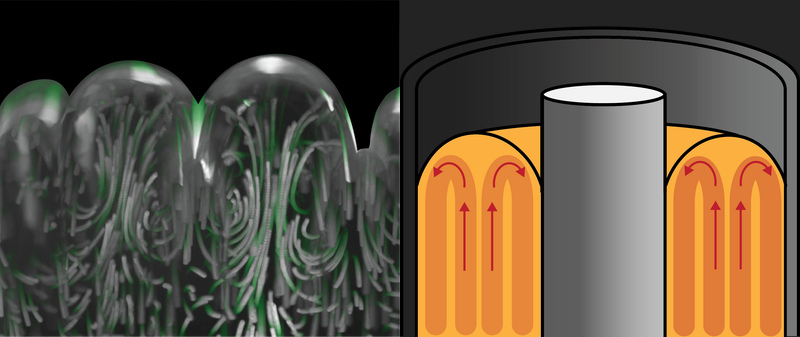Soft Solid Flows Through a Pipe
Pipe flow has always been for liquids and gases. But new videos show that an ultrasoft solid material—a substance that is 1000–10,000 times softer than Jell-O (100,000 times softer than a gummy bear)—can flow through a pipe in a continuous fluid-like stream [1]. This gel is technically a solid because of its elasticity—stretch it, and it will spring back to its original shape. One consequence of this solidity is that the front surface doesn’t remain smooth when moving through the pipe, but instead it develops a set of radial trenches, or “furrows.”
Jonghyun Hwang, Mariana Altomare, and Howard Stone from Princeton University observed the flow of a polymer mixture through a pipe with a ring-shaped cross-section (an annular channel). To study the flow, they varied the geometrical parameters, the gel’s flow speed, and the gel’s properties. They also filled the gel with particles whose trajectories could be tracked.
The team found that, since the gel is unable to slide along the walls, it essentially turns itself “inside out” when pushed through the channel. The material farthest from the walls moves forward at the highest speed and then, when it reaches the front surface, splits into two directions, one toward the inner wall and the other toward the outer wall.
With different layers of the gel flowing at different speeds, a growing internal shear stress (a “spring-back” force) develops as the material advances. Eventually, at a threshold distance from the start, furrows appear on the front surface in order to relieve the built-up stress—like the crumples that form in a scrunched sheet of paper. The researchers say that their ultrasoft gel resembles biological materials such as collagen, a gel-like material found in skin, bones, and connective tissues, so a similar setup could potentially be used to study the properties of these substances.
–David Ehrenstein
David Ehrenstein is a Senior Editor for Physics Magazine.
References
- J. Hwang et al., “Surface furrowing instability in everting soft solids,” Phys. Rev. Lett. 134, 058205 (2025).





